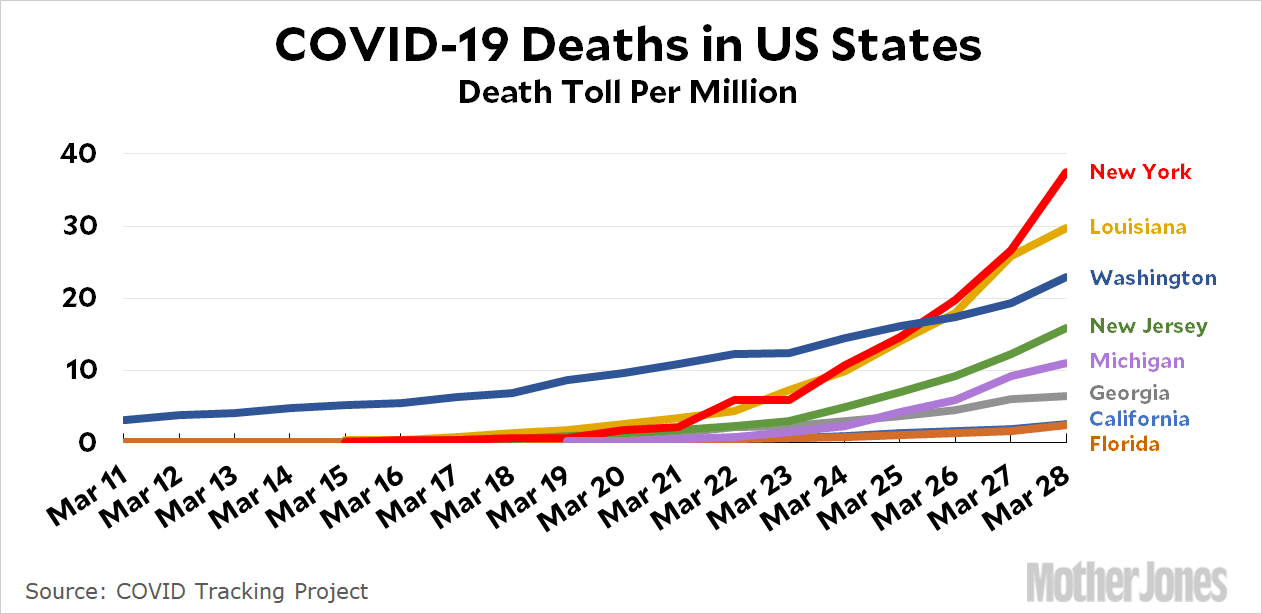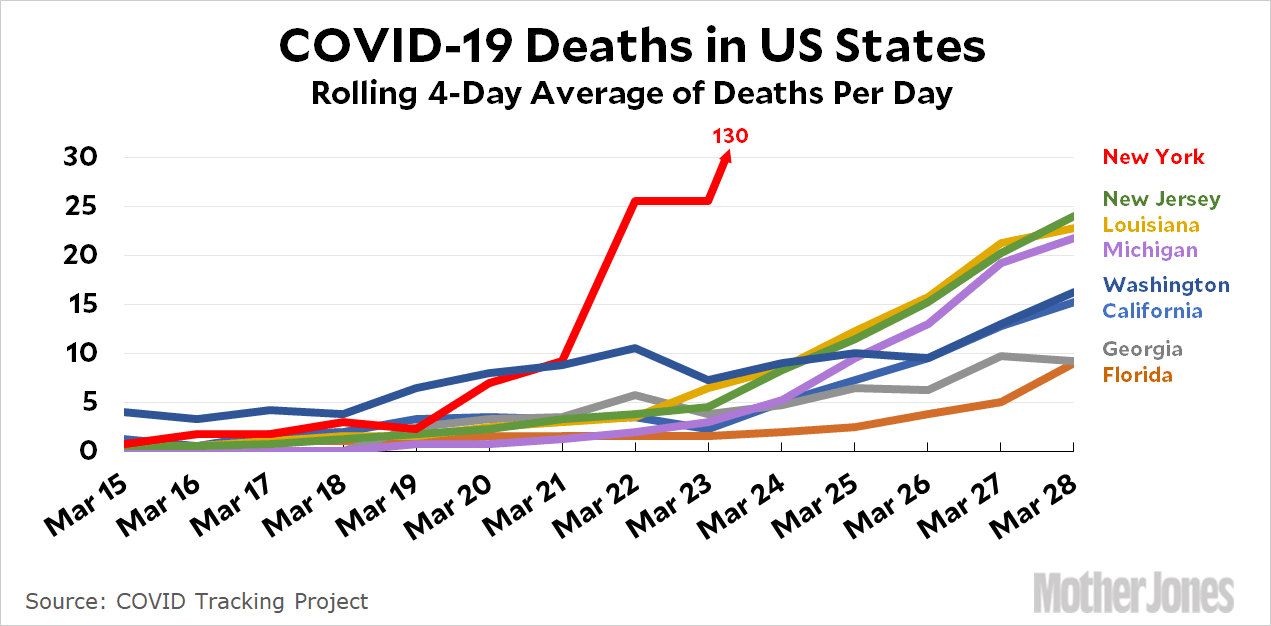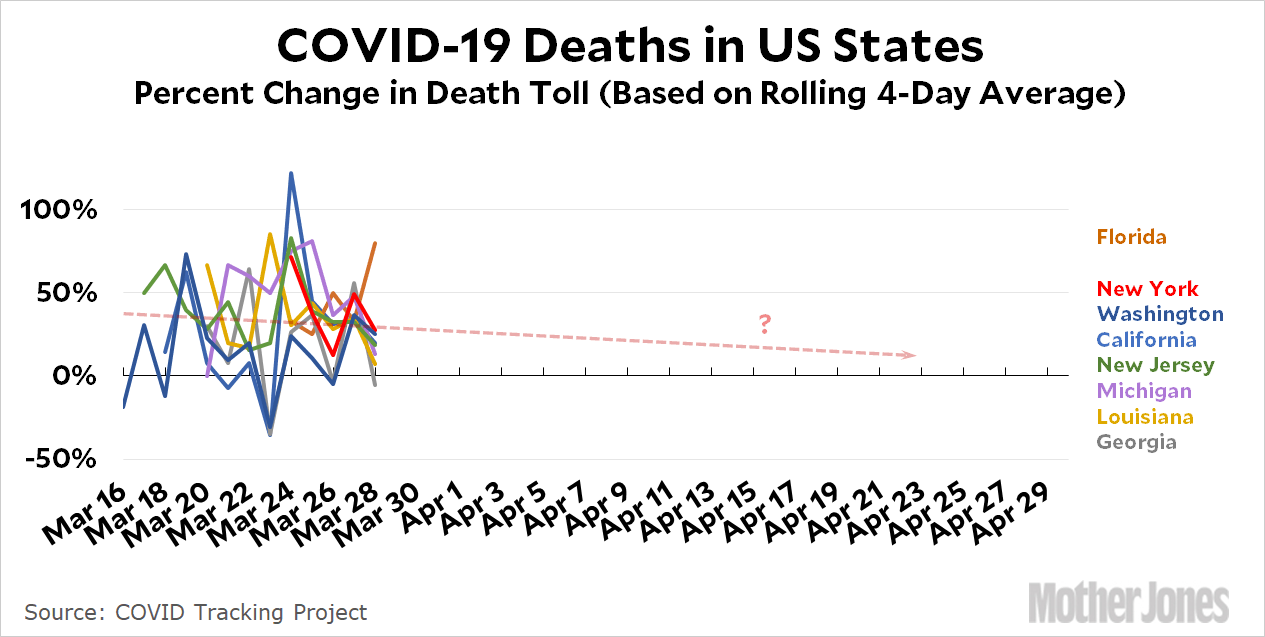How long do we all need to stay at home? A team from AEI headed by former FDA commissioner Scott Gottlieb says this:
To slow the spread [of COVID-19], schools are closed across the country, workers are being asked to do their jobs from home when possible, community gathering spaces such as malls and gyms are closed, and restaurants are being asked to limit their services. These measures will need to be in place in each state until transmission has measurably slowed down and health infrastructure can be scaled up to safely manage the outbreak and care for the sick.
….The trigger for a move to Phase II should be when a state reports a sustained reduction in cases for at least 14 days (i.e., one incubation period).
I’m not sure anyone trusts our case counts right now. I sure don’t. But a sustained reduction in cases will produce a sustained reduction in deaths a week or two later, so the AEI report is suggesting that the earliest we can ease up on lockdown measures is a week or so after deaths have peaked and started to decline. But when might that be? Here’s a chart showing the cumulative per-capita death toll in eight states:

That’s no help. All the lines are going up, up, up, with no sign of slowing down. So let’s take a look at the daily death toll instead. These are absolute numbers, not per capita. I’ve used a rolling four-day average to smooth out the trendlines:

Still no help. How about if we look at the percent change in the daily death toll?

This is a mess. But if I squint hard I think I can see a slight downward trend, which leads to my usual projection: deaths will peak in mid-to-late April before they start to decline in May.
Put all this together and the best answer is: we don’t know. April is going to be a bad month, but beyond that the data so far just doesn’t tell us much about when we’ll hit our peak. We have to wait and see.
POSTSCRIPT: For what it’s worth, I’d be pretty skeptical of the AEI recommendation anyway. I’d prefer to keep countermeasures fully in place until we see a very sustained drop in the death rate. Nor do I think states are the right units of analysis. If it makes sense to ease up on countermeasures at different times in different places, surely we’d want to do it on a county basis?
Personally, I think our biggest risk is giving in to public pressure and easing up too soon. I’d vote for a nationwide lockdown that doesn’t end until the daily death rate has declined to a dozen or less and, in the words of the AEI report, “local hospitals are safely able to treat all patients requiring hospitalization without resorting to crisis standards of care; and the capacity exists in the state to test all people with COVID-19 symptoms, along with state capacity to conduct active monitoring of all confirmed cases and their contacts.”

















